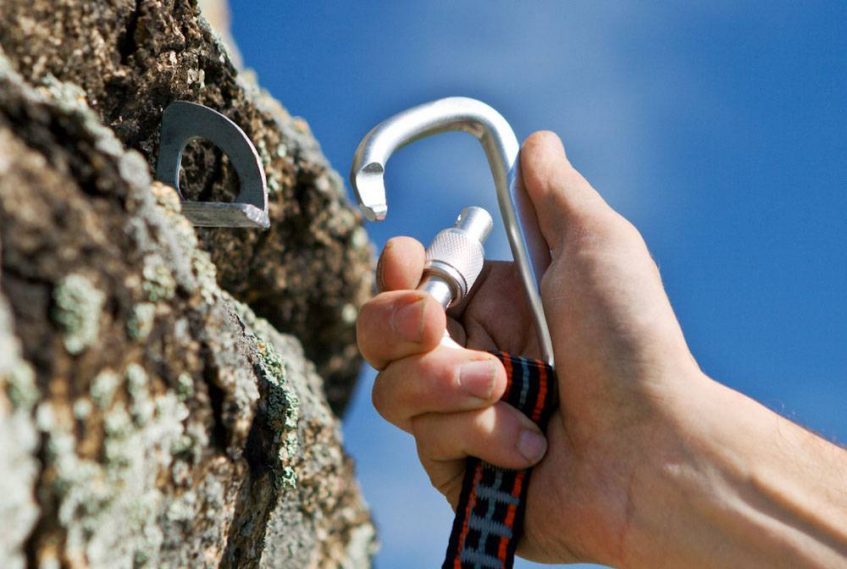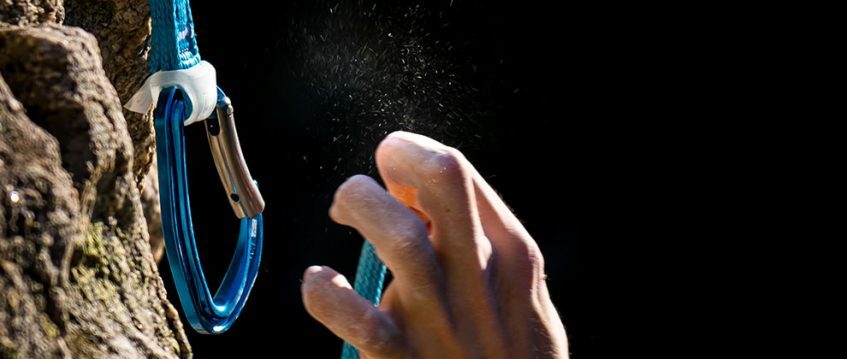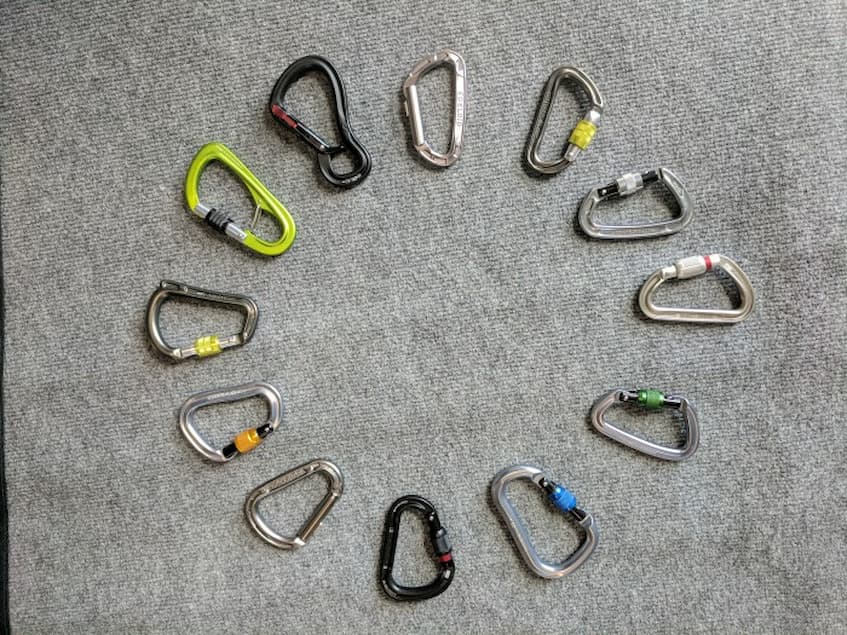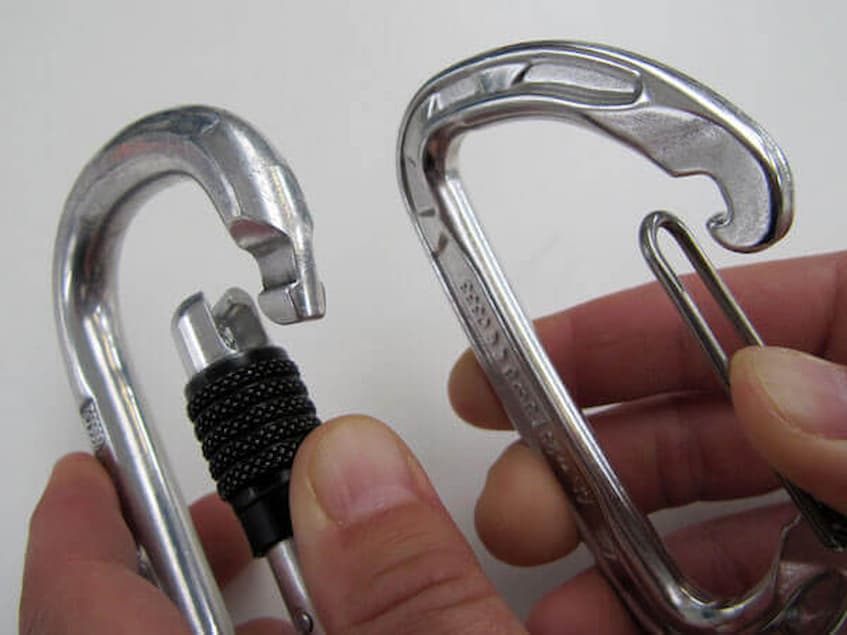
How to Choose the Right Carabiner for the Ultimate Climbing Experience
Although carabiners are primarily used for climbing and mountaineering, there are numerous other uses that you should consider before making a buying decision. Technicians who frequently climb poles for work may use carabiners to secure themselves as they move upward. Survivalists also keep them on hand to secure the gear and make emergency repairs. Some people even use carabiners as improvised keychains to hold multiple keys or shopping cards. Moreover, a carabiner can be one of the many exceptional gifts for outdoor enthusiasts.
But, before using a single carabiner for almost everything, check out the following guide to learn everything you should know about this climbing hook.
Contents
Carabiner Structure
When looking for a quality climbing hooks that you can rely on, you will see that they consist of five basic components although there are thousands of different designs.
The spine is the strongest part of the carabiner, carrying the majority of the force and weight.
The rope basket is the bend at the carabiner’s top. It is frequently wider to allow the rope to move freely and reduce wear on the carabiner.
The gate is spring-loaded and opens inwards to allow ropes, devices, or other forms of protection to be attached.
The bend at the bottom is the runner end. This end is often narrow to aid in positioning the carabiner on quickdraws or harnesses.
To close the carabiner, the gate latches with the nose.
Locking vs. Non-Locking Gates
Types of Non-Locking Gates
Solid Gate
The gate is constructed of a solid piece of aluminium or steel that connects to a hinge and opens at the nose. Solid gate carabiners are the most common type of carabiner used for sports quickdraws. They are also preferred when clipping into bolt plates because they are less likely to wiggle free when climbing on carrots in Australia.
Wire Gate
The gate is made of a wire loop, making the carabiner lighter. What makes this carabiner ideal for alpine quickdraws and camming devices is its design which is less prone to ice and dirt-trapping. Although uncommon, a wire gate has a lower chance of opening when the carabiner moves unusually quickly.

Types of Locking Gates
Screw Lock
Screw Locks are the most popular type of locking climbing hooks as they are simple, inexpensive, long-lasting, and dependable. The threaded barrel is screwed closed to lock the gate or open to release it. These locking gates necessitate the good old-fashioned habit of double-checking that your gear is properly locked and secured. If you’re having trouble getting into checking, visual cues can help you notice when they’re unlocked.
Twist & Tri Locks
The barrel around the gate is spring-loaded in these lock gates, resulting in a carabiner that closes and locks on its own. The design of Twist and Tri makes them easy to use and convenient. Their characteristics, however, should not be taken for granted. Pre-climbing equipment checks should still be performed, as should regular barrel cleaning to prevent ‘sticking’ or ‘jamming’ from sand and dirt.

Carabiner Shapes
D-Shape
D-shaped carabiners are tough and long-lasting, making them an ideal option for various climbing tasks. Because of the asymmetrical shape, the load is distributed closer to the spine, where the major axis is strongest. The width of the rope basket and runner end is similar.
Offset D
The “Offset D” improves on the D-shape design by exaggerating the rope basket to create a lighter and stronger carabiner. The offset also allows for a wider gate opening, which is perfect for quickdraws, small locking carabiners, and racking ones.
Pear
The design of this climbing hook is intended for rappelling and belaying with a device or a munter hitch. The larger gate opening facilitates the attachment of tube-style belay devices loaded with ropes. The round rope basket, on the other hand, aids in the management of wear on the rope and carabiner. Because the pear carabiner is heavy, one or two of these will be sufficient to get you out of a sticky situation.
Oval
Although oval carabiners are the weakest, they still have some very useful applications. Ovals can hold more pitons or nuts on a single carabiner for racking protection. When attaching webbing or pulleys to the carabiner, the symmetric shape helps centre the load, which is commonly used in primitive slacklines or weighted training. Ovals are also sometimes used to construct a carabiner-brake rappel for a double rope descent.

Carabiner’s Nose Types
Non-Keylock
These carabiners have a notch in the nose that hooks onto the gate. The notch aids in keeping the carabiner’s gate closed when under force. Because they are less expensive to produce, non-keylock carabiners are more common. The disadvantage of the design is that the notch is prone to catching on to things like nuts/stoppers or bolt plates.
Keylock
The keylock system is where the gate, like a jigsaw puzzle, connects to the nose. Its design is ideal for racking a set of nuts or preventing your carabiner from snagging on a bolt, harness, or sling.
Hooded
Like a keylock system, a hooded nose prevents the notch from snagging on equipment.

Size, Weight & Material
Full Size
Most people will rack nuts, stoppers, hexes, or quickdraws with full-sized carabiners. You’ll want the ease of handling, especially if you have large hands.
Small & Mini Sizes
It’s sometimes necessary to save weight when putting together alpine quickdraws or racking cams. Mini carabiners can provide the same strength as full-sized ones while weighing as little as 22g. In these cases, even a few grams saved can make a significant difference.
Material & Weight
Almost all recreational carabiners are now tempered aluminium alloy (7075-T6). It’s a high-strength material that strikes a balance between the need for light, ductile, and tough carabiners at a reasonable price. While the material does not differ significantly between carabiners, the differences in strength-to-weight are achieved through product design. Weight can be manipulated without compromising strength in the rope basket and spine of a carabiner. The rope basket and spine can be shaped “Round” or “I-beam,” or a combination of the two.

Strength and Certification
When looking for a rock-climbing carabiner, make sure it’s made by a well-known climbing manufacturer and has “EN” and/or “UIAA” certification visible on the spine or via a database on the manufacturer’s website. Climbing hooks must meet a minimum strength required to be certified for a specific use.
The “kN” value determines the strength of the carabiner. One kN is approximately 224.8 lb of force (101 kg). A carabiner with a strength of 23kN along the major axis can withstand 5170.6 lb (2345.3 kg) of force.


No Comments